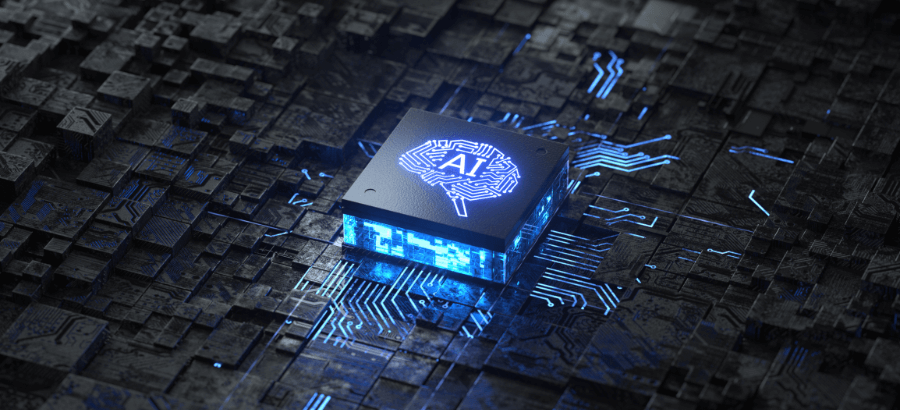Artificial intelligence (AI) is a transformative technology that will enhance people’s
decision-making by using data and creating more accurate predictions. Traditionally, most decision-making has been based on experience and instincts. However, the world has radically changed, and so have supply chains and customer behaviors. In these times when past practices have been overturned, people at all levels in a business need a tool to help them plan and prioritize activities.
What is AI
AI is the term for computer software that gets information about the environment, learns, and takes action in response to that information and to objectives that are set. AI can perform tasks, often performed by humans, with a high degree of accuracy and intelligence. While AI does not replace human intelligence, the insights that come with using AI can significantly increase human capabilities.
A Gartner report expected that augmenting human capabilities with artificial intelligence would generate over $2 trillion in business value and add 6 billion hours of worker productivity.
Benefits AI can deliver
| Time savings | Automates repetitive manual and cognitive tasks so reducing the time needed to process those tasks |
| Productivity increase | Enable faster execution of tasks and better decision-making |
| Revenue growth | Identify and provide new services that increase customers or their willingness to pay more for those services |
| Business process improvement | Optimize process efficiency by enabling staff to accomplish more tasks or do something they typically could not |
| Customer experience | Provide greater personalization that can result in a better customer experience |
| Agility | Undertaking a number of AI projects can help build new capabilities and be more agile when responding to new opportunities and challenges |
How to start with AI
One of the biggest mistakes a business can make is to implement AI for the sake of implementing it without a clear understanding of the business value it will achieve. In addition, AI requires change management. Cutting-edge solutions won’t work if employees can’t or won’t change their behaviors to adapt to new ways of working.
Data
Data is the key ingredient for AI. The amount of data required depends on the goals of AI. For longer-term decision assistance, very large volumes of data are needed – the millions of rows. However, if AI is being used to assist with shorter, say weekly, activities, then much smaller volumes will work – the kind of data a manufacturer usually has in its ERP system.
It is critical that the data is cleansed so that the AI engine is using high-quality data. Do not underestimate the data challenges.
Two final points about data. Until mid-2020 the general belief was that the more historical data available the better AI-based predictions would be. The last 18 months though has shown that historical data can become rapidly obsolete in the face of dramatic changes.
In the past, data that was used in AI engines could include data from external sources relating to individuals, such as socio-economic information and other personal information. With the rise of data privacy, such as GDPR, CCPA and POPI, the ability for businesses to obtain that data is now severely restricted.
Infrastructure
AI needs an appropriate technology infrastructure. As your company moves from simple to more sophisticated and complex AI models, the right computational investment becomes critical. The AI system needs to run in its own server, either a separate server on-premise, or an increasingly popular option, a configuration on a cloud platform.
Skills
The job of a data scientist is relatively new, but to ensure the best use of AI technology it’s becoming necessary to have data scientists. Employee skills will also need to be upgraded through a basic education in AI so they can understand its opportunities, benefits and challenges.
Business-process redesign
As the AI inventory management project starts, consider how workflows might be redesigned, focusing on the separation of work between humans and the AI. A thorough redesign of workflows is necessary to ensure that humans and machines augment each other’s strengths and compensate for weaknesses.
Data-driven
Successful use of AI requires a mind shift – to being data-driven. Being data-driven means not only developing a culture where decisions are based on data, not instincts or experience, but also where anyone is allowed to object to an action or decision when they uncover data that suggest a different direction.
Even though AI cannot predict the future with 100% certainty, an AI platform can calculate a near-infinite number of permutations that can guide planners and schedulers on what inventory items are at risk of a stock-out. Once a probability is known, decision-makers can identify an appropriate amount of safety stock in which to have on hand and begin to prepare accordingly.
AI has the potential to offer new sources of revenue, through massive improvements in the way things are done or by enabling new processes that were not previously possible or envisaged. Major benefits are however unlikely to be achieved without investing in technology, and more significantly, changing business models and mindsets.
In my next blog I will discuss how AI embedded in your ERP can assist with managing and optimizing your organizations inventory.







